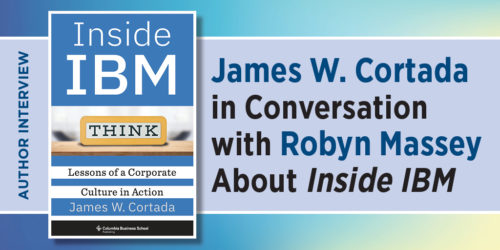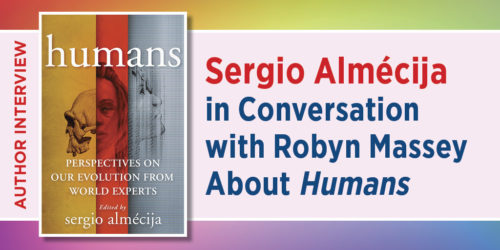Anne Skomorowsky in Conversation with Robyn Massey about The Carriers

A tiny mutation on the X chromosome is a relatively common but still little-known genetic condition that can shape a family’s history. Passed down from a “carrier” parent to a child, fragile X syndrome is the most common inherited cause of intellectual disability and autism. Beyond that—and a rarity among genetic disorders—some fragile X carriers not only transmit the mutation but also experience related conditions. But what do we know about fragile X, and what are the consequences of being a carrier? Anne Skomorowsky, author of The Carriers: What the Fragile X Gene Reveals About Family, Heredity, and Scientific Discovery, a clinical instructor in psychiatry at the NYU Grossman School of Medicine, and attending psychiatrist at NYU Langone Hospital, opens up about this complicated condition and its life-altering consequences in this conversation with the publicist Robyn Massey.
Robyn Massey: What is fragile X?
Anne Skomorowsky: There are at least three fragile X disorders. The best known is fragile X syndrome, the most common inherited form of autism and intellectual disability. But carriers of the fragile X mutation, who do not have the syndrome, can also have FXTAS (fragile X-associated tremor/ataxia syndrome), a degenerative neurologic disorder, and FXPOI (fragile X-associated primary ovarian insufficiency), which can cause infertility. FXAND (fragile X-associated neuropsychiatric disorders, such as anxiety, depression, and learning disabilities) has recently been proposed as a fourth group of disorders. A carrier mutation is also known as a premutation.
Massey: Where is fragile X most prevalent, in what populations?
Skomorowsky: The highest known prevalence is in the village of Ricaurte, Colombia, which I write about in the book. There are pockets of high prevalence in other parts of Colombia and Latin America, in Spain, and in Tunisian Jews. Northern European and American Jews may have a higher prevalence of fragile X syndrome; there are contradictory reports. However, fragile X is found in all populations and ethnic groups.
Massey: What drew you to the topic of fragile X?
Skomorowsky: The fragile X premutation was found in my family. I was fascinated to learn about potentially catastrophic conditions occurring in a family with no history of intellectual disability, and some things about my family background became clearer once considered in light of this new information. When there is a disease I have never heard of, I get curious.
Massey: When was fragile X first discovered?
Skomorowsky: Fragile X disorders have probably always been around, but the first cases of fragile X syndrome were described in a paper in 1943. At the time it became known as Martin-Bell syndrome. The “fragile site” on the X chromosome was discovered in 1969, and the FMR1 gene and the fragile X premutation, or carrier mutation, were discovered in 1991.
Massey: Why do you suppose fragile X is a relatively unknown condition?
Skomorowsky: According to the U.S. Centers for Disease Control, studies estimate that between 1 in 148 and 1 291 females and between 1 in 290 and 1 in 855 males in the United States may have a fragile X premutation. However, because of the unusual way that fragile X is inherited, the full mutation (fragile X syndrome) is rare, affecting approximately 1 in 7,000 males and 1 in 11,000 females. The full mutation is obvious, but the premutation and its associated problems are just being recognized.
Massey: Now that you know about fragile X, how would you counsel people who are carriers and want to have a baby?
Skomorowsky: It depends. Everyone should consult with their own doctor or genetic counselor. My own choices would be that if I had a family history of intellectual disability, neurodegenerative disorder, or early menopause or if I had difficulty conceiving, I would request preconception testing. I would also recommend this for anyone who wishes to decrease the odds of having a baby with an intellectual disability.
Massey: What if you are an expectant mother and it is discovered that you carry the fragile X gene. What does it mean?
Skomorowsky: If you learn you are a carrier while you are pregnant, you need more information. Women with the full mutation may not know they have fragile X syndrome until they are tested while pregnant. For these women, if they pass the affected X chromosome to their baby—and there is a 50 percent chance that they will—their child will also have the full mutation. If they pass the unaffected X, their child will be unaffected. For women who have the carrier form of the gene, there are three possibilities. One is that they will pass the unaffected X to their baby and have an unaffected baby. There is a 50 percent chance of that. Another is that they could pass their carrier mutation to the baby, and the baby will also be a carrier. Finally, a pregnant woman can be a carrier whose premutation becomes a full mutation in her baby, and the baby will have fragile X syndrome. Prenatal testing and genetic counseling can help a pregnant woman learn what to expect.
Massey: What if you are an expectant mother and it is discovered that your partner carries the fragile X gene. What does it mean?
Skomorowsky: Men who are carriers of fragile X premutations do not have children with fragile X syndrome. However, all of the daughters of male carriers will be carriers, and none of the sons of male carriers will be carriers. That is because a male carrier passes his only X chromosome to female children and his Y chromosome to male children.
Massey: What if both partners carry the fragile X gene?
Skomorowsky: Male children inherit their fathers’ Y chromosomes, so only the mother’s X chromosome is a consideration. Female children can inherit the mutation from both parents. And female children could inherit two premutations, in which case their premutation symptoms would likely be more severe. They could also inherit the full mutation from their mothers and a premutation from their fathers, in which case they could have both symptoms of fragile X syndrome and symptoms related to the premutation. Men don’t pass the full mutation to their children so there is no risk of female children having two full mutations.
Massey: What do you want to say to those who are fragile X carriers?
Skomorowsky: Be aware that it is possible that even without having children with fragile X syndrome, there are ways you can be affected by being a carrier. For younger women, early menopause and infertility should be watched for and treated. Older carriers can develop a movement disorder similar to Parkinson’s disease and a dementia condition. Carriers may be at higher risk of ADHD, anxiety, mood disorders, high blood pressure, and some autoimmune disorders. Carriers who know they are carriers can care for themselves and advocate for themselves. Carriers who have children who are carriers can advocate for their children to receive testing, services, and medical care.
Massey: What do you want to say to the science community?
Skomorowsky: I would like the science community, especially the medical community, to understand the value of listening to women and hearing their life stories. Without the contributions of mothers, fragile X disorders would not have been discovered. I also urge the medical community to take the notion of FXAND seriously. Research has proved that FXTAS and FXPOI are life-altering and not uncommon conditions in carriers. FXTAS affects up to 75 percent of male carriers by the time they are in their seventies, and FXPOI affects 25 percent of female carriers; there is no reason to think that FXAND will be any different once it has been further elucidated.
Massey: What should the general population be aware of?
Skomorowsky: Genes have unpredictable effects, and every person’s life history is different. A genetic mutation that was essentially invisible can now be understood to have significant effects on the trajectories of individuals and on families. The lesson of this book is that any person’s life story emerges from a confluence of life events and genetic endowment and that the tiniest alteration in a person’s genome—a change of a few base-pairs of DNA—can have an impact on generations of that person’s family. Learning about the lives of others is the best way to understand the interplay of genes and environment, and I have tried to illustrate that with the stories I tell here.








